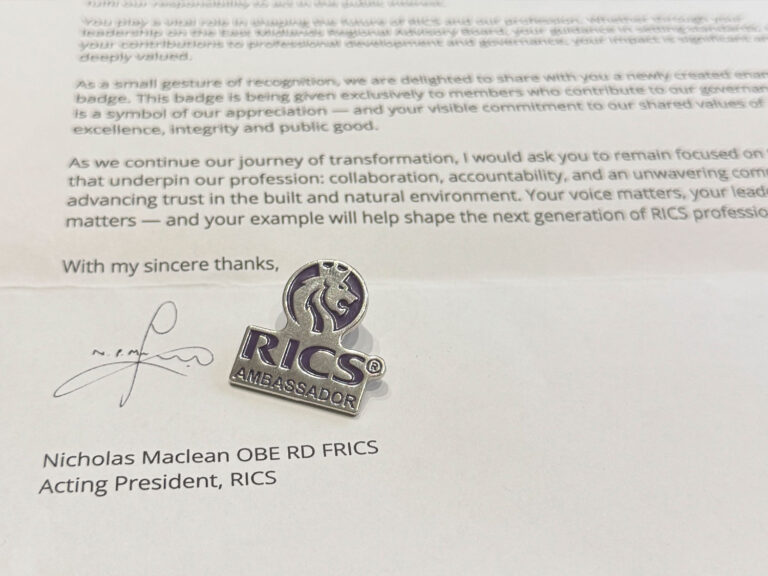Understanding Flat Roof Defects: A Guide for Homebuyers and Property Owners
Flat roofs are a common feature in both older and modern homes across Nottingham, Derbyshire, Leicestershire, and the wider East Midlands. Whether you’re buying a stylish city apartment in West Bridgford, extending a period home in Mapperley, or investing in property in Bingham or Loughborough, understanding flat roof construction and the potential for defects is essential.
As Chartered Surveyors, we regularly carry out Level 2 and Level 3 home surveys on properties with flat roof elements and we’ve seen the good, the bad, and the catastrophically leaky. In this blog, we’ll walk you through the different types of flat roofs, common problems to look out for, and how a professional building survey can protect you from costly surprises.
What Is a Flat Roof?
Flat roofs are defined by their very low pitch, typically between 1° and 10°. Although they appear ‘flat’, they are designed with a slight gradient to allow water runoff. These roofs are commonly used on:
- Rear kitchen or bathroom extensions
- Apartment blocks
- Garages or outbuildings
- Dormer windows and bay windows
- Modernist or contemporary architecture
They can be practical and aesthetically pleasing when well-constructed but when they fail, the consequences can be severe.
Common Types of Flat Roof Construction
Built-Up Felt Roof (BUR)
This is the most traditional flat roof type, made from multiple layers of bituminous felt bonded together with hot tar. It’s typically finished with stone chippings to protect against UV damage.
Pros: Cost-effective, widely used
Cons: Prone to cracking, blistering, and water ingress over time
Single-Ply Membranes (EPDM, PVC, TPO)
Modern materials like EPDM (rubber), PVC, or TPO offer cleaner finishes and better longevity. These are commonly used in high-end residential developments.
Pros: Long lifespan, minimal maintenance
Cons: Poor installation can lead to seam failure
GRP (Glass Reinforced Plastic)
GRP flat roofs are made from fibreglass and resin, they’re often seen on premium properties and extensions.
Pros: Seamless finish, highly durable
Cons: Can crack due to movement or poor detailing
Liquid-Applied Membranes
These are painted-on waterproofing systems applied over existing substrates.
Pros: Ideal for complex shapes or refurbishment
Cons: Depends heavily on good preparation and application
Typical Flat Roof Defects We See During Surveys
Even the most well-laid flat roof will deteriorate over time. Common issues we encounter during Level 2 and Level 3 building surveys and roof inspections include:
Ponding Water
Standing water is a major cause of flat roof failure. It can result from poor design or blocked outlets. Over time, ponding leads to surface degradation and internal leaks.
Blistering and Cracking
Thermal movement, trapped air, and UV exposure can cause surface blistering or cracking in felt and GRP systems. These weak points often precede water ingress.
Failed Flashings
Where the flat roof meets walls or parapets, flashing is crucial. If it fails, water can track behind it and enter the structure undetected.
Delamination or Peeling Membranes
We often see this in older felt roofs, where the material lifts away from the deck beneath, creating entry points for water.
Rotten Decking or Joists
Water ingress often leads to hidden damage to the timber structure below the surface. In some cases, clients don’t realise this until ceilings collapse or structural sagging occurs.
Why Flat Roof Defects Can Be So Damaging
Unlike pitched roofs, flat roofs don’t shed water as easily. This makes them more vulnerable to standing water and slow leaks which can cause significant internal damage over time. In some cases, flat roof leaks go unnoticed until:
- Internal ceilings collapse
- Mould becomes a health issue
- Electrical fittings are compromised
- Structural joists or boarding are beyond repair
The cost of replacement can be thousands but the true risk is the disruption it can cause, especially if the property is your home or main investment.
How a Building Survey Can Help You Avoid Flat Roof Nightmares
At Bramble & Wagg, we carry out detailed inspections of flat roofs as part of our Level 2 Home Surveys (formerly known as a Homebuyer Report) and Level 3 Home Surveys (formerly known as a Building Survey). Our reports include:
- Visual inspection of accessible roof surfaces
- Commentary on roof coverings, flashings, and detailing
- Identification of surface defects or signs of movement
- Assessment of drainage and ponding
- Advice on likely lifespan and repair options
- Recommendations for further investigation if required
We use tools such as moisture meters where appropriate, and we’re always happy to provide photo evidence and discuss findings via MS Teams.
In modern Architect designed properties with extensive areas of flat roofing, it’s especially important that flat roofs are both visually and structurally sound. Our job is to give you the clearest possible picture so you can negotiate, plan, or walk away.
Buying a Home with a Flat Roof? Here’s What to Do
- Instruct a Chartered Surveyor early in the buying process: don’t wait for problems to show up later
- Choose the right survey for the property’s age, type, and condition; we’ll guide you
- Act on the findings: whether that’s budgeting for repairs, renegotiating the price, or obtaining specialist reports
We work across Nottingham, Nottinghamshire, Derbyshire, and Leicestershire; from West Bridgford to Loughborough; providing class-leading advice for clients buying homes, second homes, or investment properties.
Final Thoughts
A flat roof isn’t necessarily a bad thing, but an uninspected or poorly maintained flat roof can be an expensive liability.
At Bramble & Wagg, we combine technical expertise with local knowledge, giving you an honest, thorough insight into your next property. Whether you need a Level 2 Home Survey, Level 3 Building Survey, or a bespoke roof inspection, our reports are clear, tailored, and delivered with the Rolls-Royce level of service our clients expect.
Need a Roof Survey in Nottingham or the East Midlands?
Get in touch with Bramble & Wagg for:
- RICS Level 2 Homebuyer Surveys
- RICS Level 3 Building Surveys
- Roof surveys and building pathology advice
- Property valuations and strategic advice







